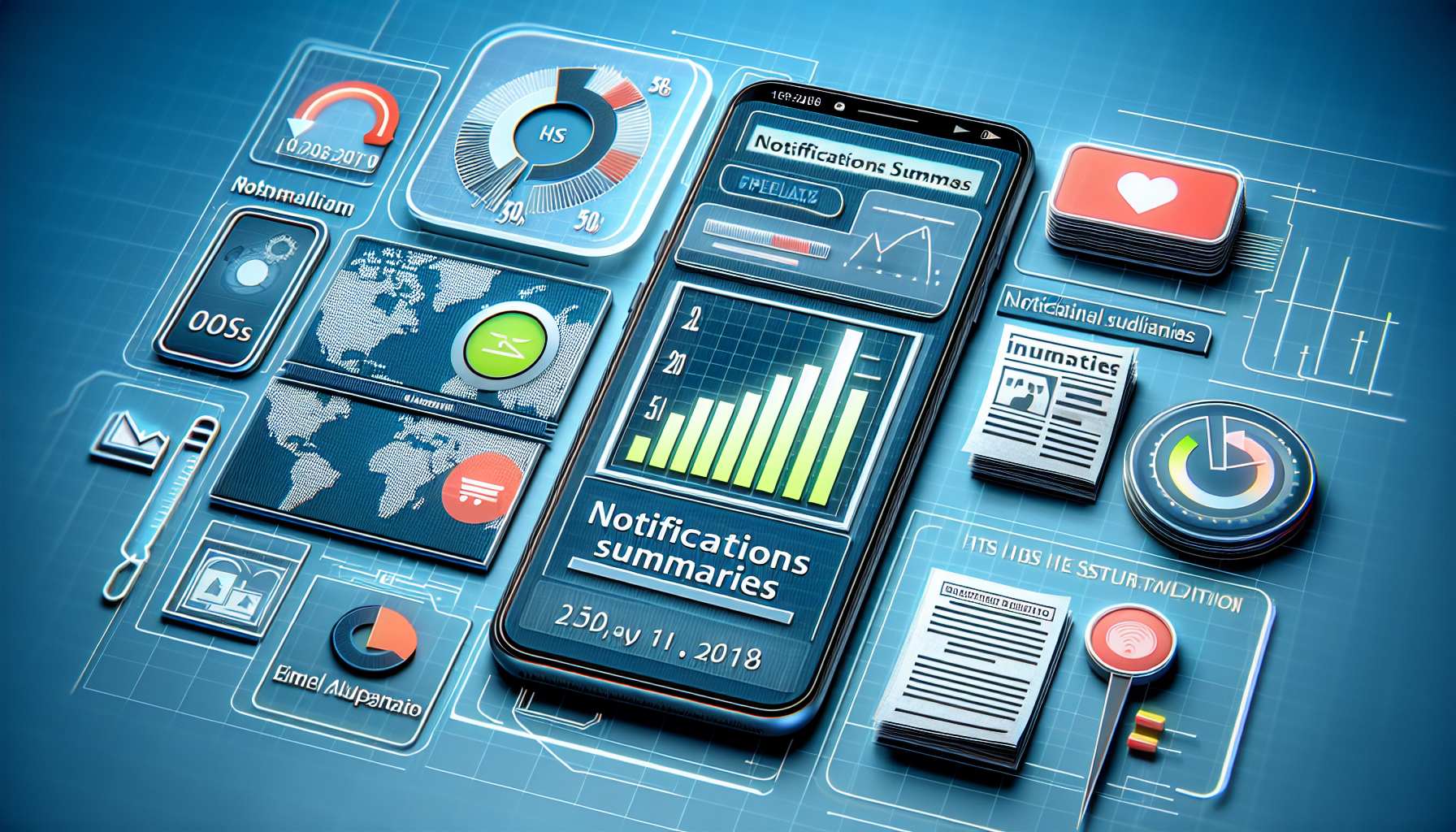
Apple’s iOS Notification Summaries: A Double-Edged Sword in the AI Era
Apple has long been recognized for its dedication to user experience and product quality; however, the introduction of its iOS notification summaries has ignited a discussion about the advantages and dangers of artificial intelligence (AI) in daily technology use. A recent event involving the inaccurate representation of a BBC headline has exposed the limitations of AI-powered summaries, prompting inquiries about the equilibrium between innovation and precision. Let’s explore the workings of this feature, its obstacles, and the steps Apple is taking to tackle the concerns.
Understanding iOS Notification Summaries
The Function of Large Language Models (LLMs)
At the heart of Apple’s notification summaries lies a form of AI known as a large language model (LLM). These models function by forecasting the subsequent segment of text based on the context established by prior input. While this method facilitates swift and effective text creation, it also presents inherent constraints. LLMs do not “comprehend” material as humans do; rather, they depend on statistical trends within the data they’ve been trained on.
The Issue of Accuracy
The predictive characteristic of LLMs guarantees that mistakes are unavoidable. Even with thorough training and enhancement, inaccuracies manifest a few times per hundred or thousand results. When extrapolated to millions of users, even a minor error rate can lead to a substantial quantity of misleading summaries. This dilemma is not exclusive to Apple—other technology leaders like Google encounter similar difficulties with AI-generated summaries in search engine outcomes.
The Dangers of AI-Generated Summaries
Misrepresentation on a Large Scale
The recent error with the BBC headline highlights a significant risk: the potential for AI to misrepresent data. Although the majority of summaries may be correct, even a small fraction of inaccuracies can have disproportionately large effects when millions depend on these summaries for rapid updates. This is especially concerning in the realm of news, where correctness is critical.
User Misconceptions Regarding AI Limitations
One of the largest hurdles is educating users about the constraints of AI. Many individuals presume that AI-generated content is inherently reliable, which may result in misplaced confidence. Without a clear grasp of how these summaries are produced and their potential for error, users are likely to accept inaccurate summaries at face value.
Apple’s Approach to the Concern
User Education
Apple seems to be opting for user education instead of completely disabling the feature. This entails informing users about the pitfalls of AI-generated summaries so they can form more educated judgments. Nevertheless, achieving widespread comprehension of such a nuanced subject is a considerable challenge.
The Long Path to Enhancement
While Apple can fine-tune its models to decrease error rates, reaching zero errors is nearly impossible with current technologies. The company will likely concentrate on reducing inaccuracies while ensuring that users recognize the intrinsic limitations of the feature.
Broader Implications for AI in Consumer Technology
A Lesson for Other Enterprises
Apple’s experience serves as a cautionary lesson for other firms utilizing AI at scale. Whether it involves Bluetooth speakers summarizing audio content or wireless earbuds embedding voice assistants, the threats of misrepresentation and misunderstanding are universal.
Balancing Innovation with Responsibility
As AI becomes more deeply integrated into consumer technology, businesses must find a balance between innovation and social accountability. This not only involves enhancing the accuracy of AI models but also promoting a deeper understanding of their constraints among users.
Conclusion
Apple’s iOS notification summaries exemplify both the potential and the challenges of AI in consumer technology. While the feature provides undeniable convenience, its limitations highlight the need for transparency and user education. As Apple works to resolve these issues, its experience will likely influence the future of AI-enhanced features across the technological landscape.
Q&A: Essential Questions About iOS Notification Summaries
Q1: What are iOS notification summaries, and how do they operate?
A1: iOS notification summaries are AI-generated previews of information, such as news headlines, sent to users’ devices. They utilize large language models (LLMs) to predict text based on context but do not genuinely “understand” the content.
Q2: Why do mistakes happen in AI-generated summaries?
A2: Mistakes arise because LLMs depend on statistical patterns instead of genuine comprehension. While they are generally accurate, occasional errors are unavoidable due to the technology’s limitations.
Q3: What steps is Apple taking to deal with inaccurate summaries?
A3: Apple is concentrating on educating users about the constraints of AI-generated summaries. The aim is to assist users in making more informed judgments rather than completely disabling the feature.
Q4: Can Apple completely eliminate errors in notification summaries?
A4: No, achieving a zero percent error rate is virtually unattainable with current AI technology. Apple can only strive to reduce errors and improve the accuracy of its models over time.
Q5: Are other companies encountering similar issues with AI?
A5: Yes, other companies, including Google, face comparable issues with AI-generated summaries. This challenge is not unique to Apple and reflects broader limitations in AI technology.
Q6: How can users guard against misinformation in AI summaries?
A6: Users should approach AI-generated summaries critically and verify important information with trustworthy sources. Recognizing that AI is not infallible is crucial to avoiding misinformation.
Q7: What does this imply for the future of AI in consumer technology?
A7: The situation underscores the necessity for transparency, user education, and responsible implementation of AI in consumer technology. Companies must balance innovation with the possible risks of misrepresentation and user misunderstanding.